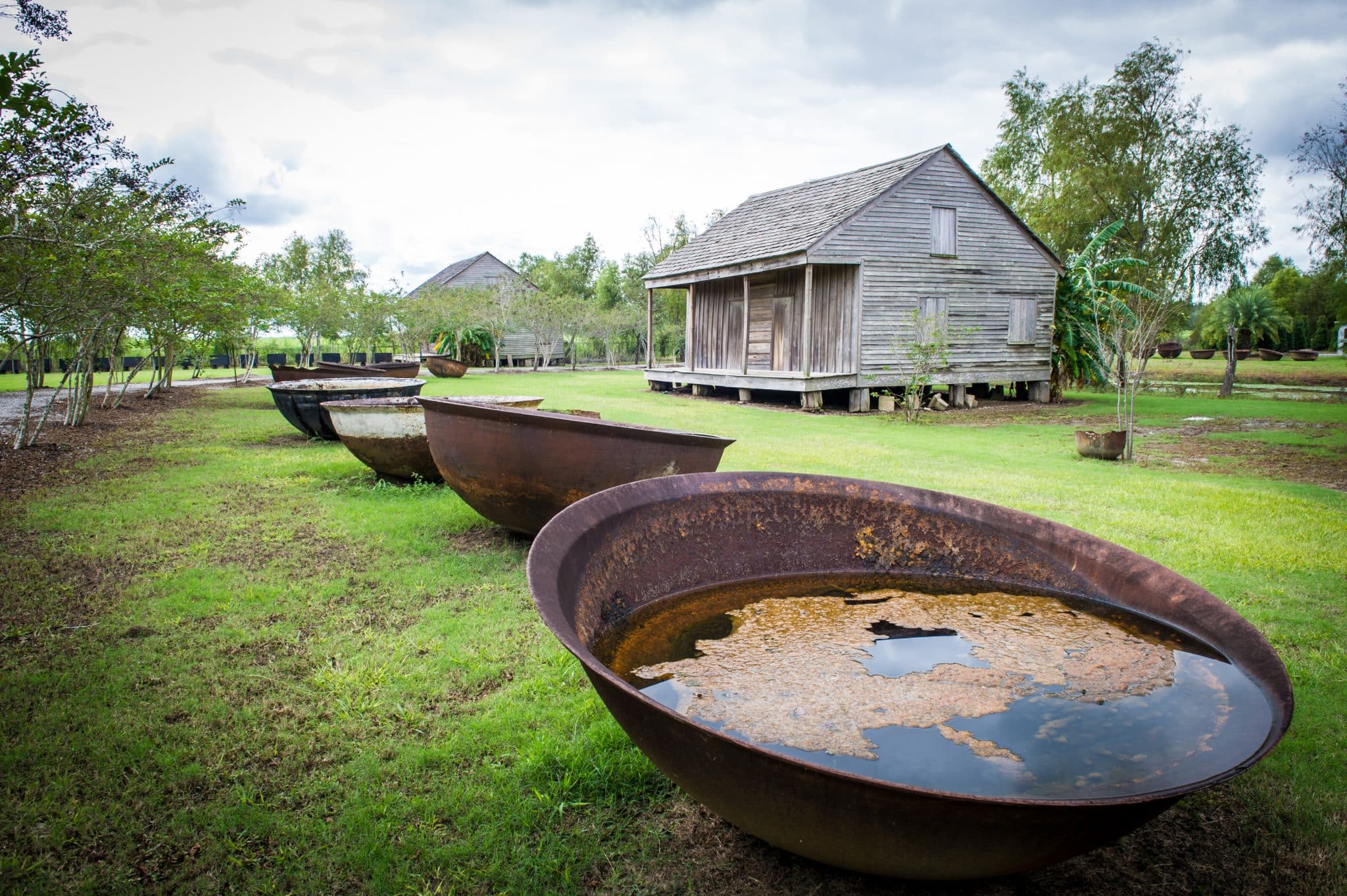Whitney Plantation is the only plantation museum in Louisiana dedicated to telling the story of slavery in the United States. Our focus isn’t on the architecture or the lives of the plantation owners. We center the lives of the enslaved people who lived and labored on this land from 1752 to 1975. If you’re looking for a Whitney Plantation FAQ list, you’re in the right place. Here are the most common questions we hear and the answers you need to know.
1. What is the Whitney Plantation?
Whitney Plantation is a nonprofit museum that focuses entirely on the history of slavery in the United States. It is located on the site of a former sugar, rice, and indigo plantation in Wallace, Louisiana. Unlike other plantation sites that highlight grand houses and wealthy families, Whitney centers the lives, voices, and labor of the enslaved.
We interpret this history through memorials, historic buildings, and first-person narratives. Our mission is education, remembrance, and truth-telling.
2. How is Whitney Plantation different from other plantation tours?
This is one of the most common questions we get. Many other plantations often emphasize the architecture, landscaping, and lifestyles of the plantation owners who lived there. Whitney is different.
Here, the focus is on the people who were enslaved. We tell their stories in their own words, highlight the skills they brought to America, and honor their lives through research-based interpretation. We don’t romanticize the past, we confront it.
3. How long does a visit take?
Most guests spend two to three hours here. Our award-winning self-guided audio tour takes 115 minutes. That leaves time to walk the grounds, explore the museum exhibits, and reflect at each memorial.
We recommend taking your time. This is not a place to rush through.
4. How do I get there from New Orleans?
Whitney Plantation is about one hour west of New Orleans by car. The most reliable way to get here is by driving yourself or joining a scheduled tour shuttle.
While ride-share services like Uber or Lyft may be able to bring you here, they are not reliable for return trips from our rural location. Plan accordingly.
5. Is this a suitable visit for children?
That depends on the child. The subject matter is heavy and emotional. We recommend our tours for children ages 12 and up, with thoughtful guidance from parents or guardians.
We encourage adults to prepare children before the visit and to talk with them afterward about what they’ve seen and learned.
6. What’s the difference between a guided and a self-guided tour?
We offer both guided and self-guided tours. Both tours follow the same route, covering all 14 stops, and include access to the same memorials and buildings.
- Guided tours are led by trained interpreters who cover the tour through their own unique lens. These tours provide deeper historical context and allow for conversation and questions. They also include access to the top floor of the Big House.
- Self-guided audio tours allow visitors to explore at their own pace using our award-winning audio tour, available in six languages.
7. What should I wear?
Dress for the weather, stay hydrated, and be ready to walk. Most of the tour takes place outdoors on gravel pathways, so plan accordingly.
We recommend:
- Comfortable, closed-toe walking shoes
- Sunscreen and water in warmer months
- Rain gear or layers if the forecast calls for it
8. Are there food options on-site?
We do not have a restaurant on site. However, light snacks and drinks are available in the Whitney Plantation Gift Store. You may also choose to visit one of the restaurants nearby or on your way back to New Orleans.
You’re welcome to bring your own food and eat in designated outdoor picnic areas. Please keep in mind that food is allowed in and just outside of the Visitor’s Center. There is no food permitted on the tour or inside any of the historic structures.
9. What memorials and historic buildings will I see?
The structures and monuments at Whitney help tell a fuller, more honest story of American slavery. Some of the most powerful parts of the Whitney Plantation experience include:
- The Wall of Honor: engraved with the names of people enslaved at Whitney Plantation
- The Field of Angels: honors more than 2,200 enslaved children who died in St. John the Baptist Parish
- Allées Gwendolyn Midlo Hall memorial: dedicated to more than 107,000 enslaved people who lived and labored in Louisiana
- The German Coast Uprising of 1811 memorial: commemorates the largest slave revolt in the U.S.
- Antioch Church: a historic Black church moved here from nearby Paulina, LA
- Historic slave cabins, the Big House, and other original buildings from the 18th and 19th centuries
10. Is the site wheelchair accessible?
Partially. The Visitor Center and indoor exhibit space are fully accessible. The grounds are difficult to navigate by wheelchair as the paths are gravel, which can be challenging for some guests.
Please note:
- Access to the interiors of historic buildings (like the slave cabins and the Big House) is limited due to steps and narrow doorways.
- We are continually working to improve accessibility across the site.
Plan Your Visit
Now that you’ve reviewed the Whitney Plantation FAQ, a visit to Whitney Plantation is waiting for you. What you’ll experience is not just a tour, it’s an opportunity to learn, reflect, and remember. Whether you’re coming from down the road or across the country, we’re honored to welcome you.
Find tickets and information right here on our website.


